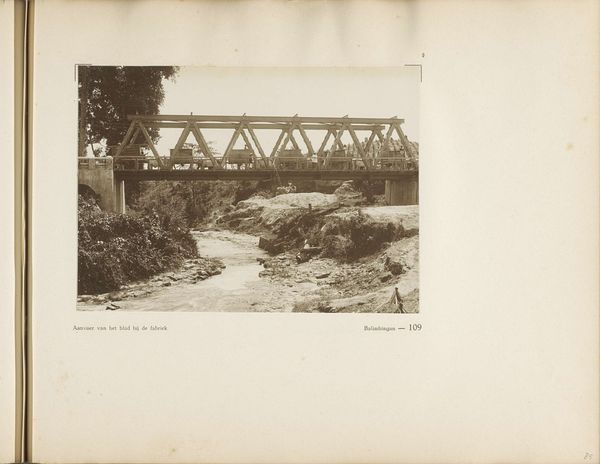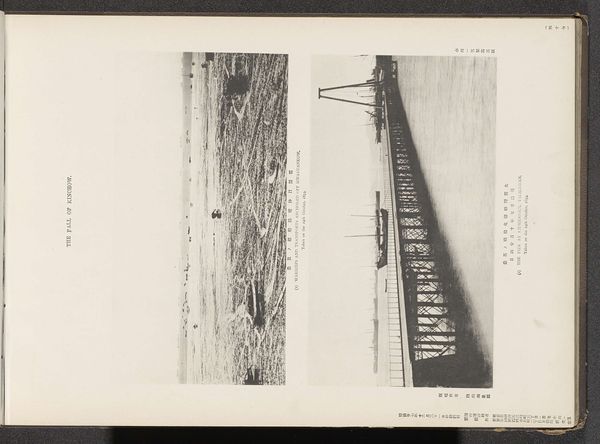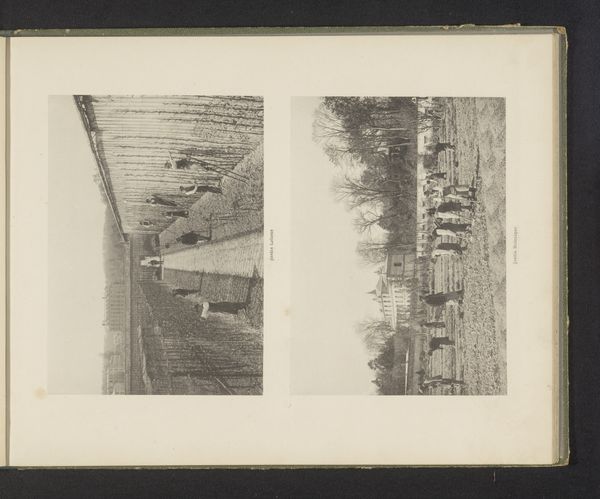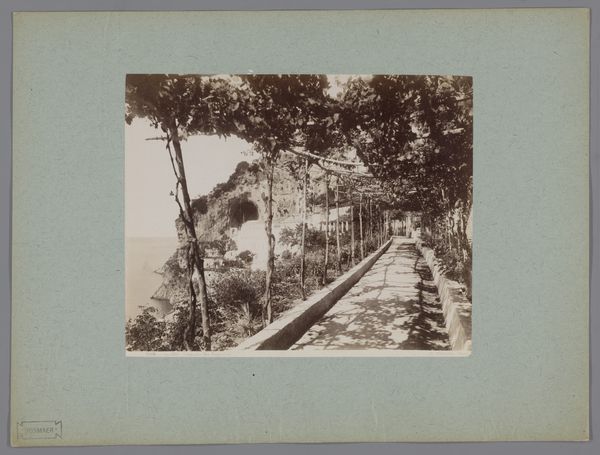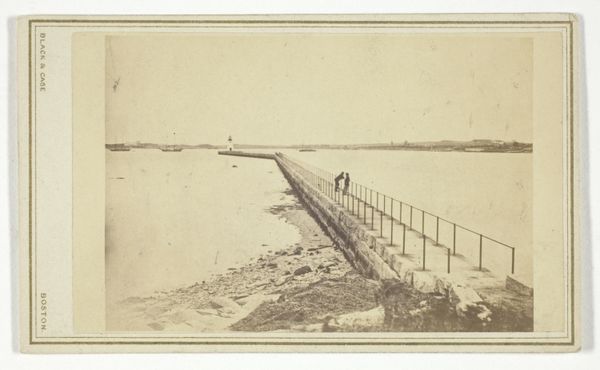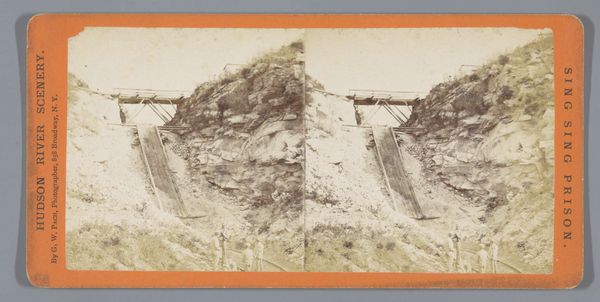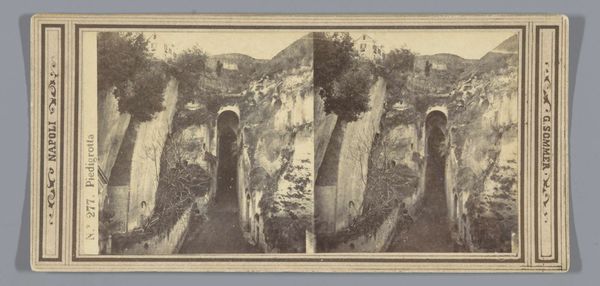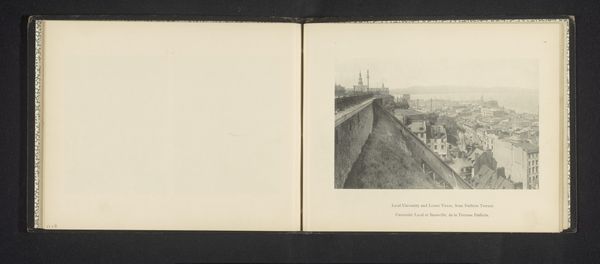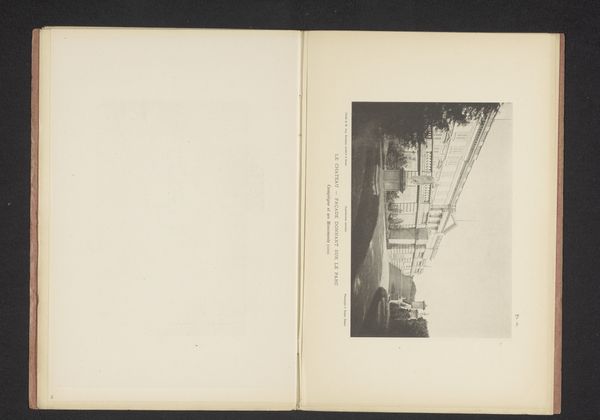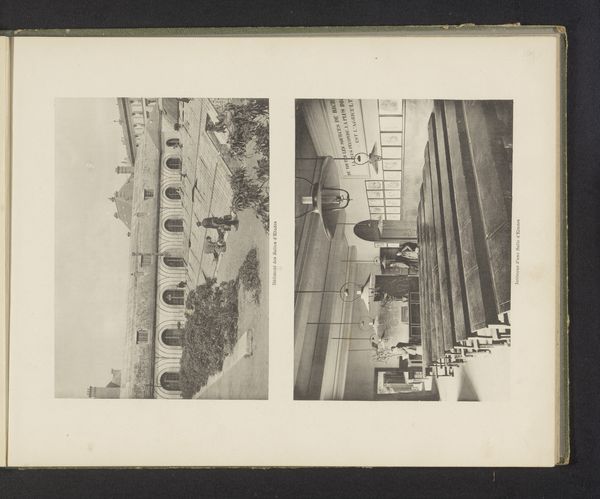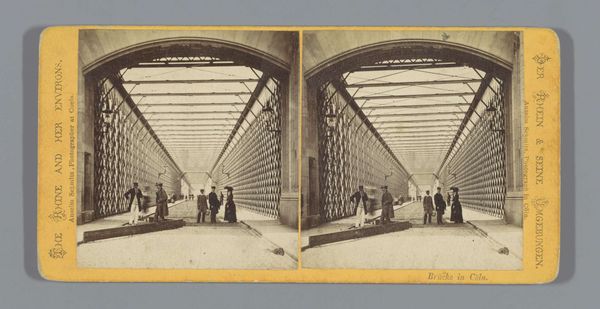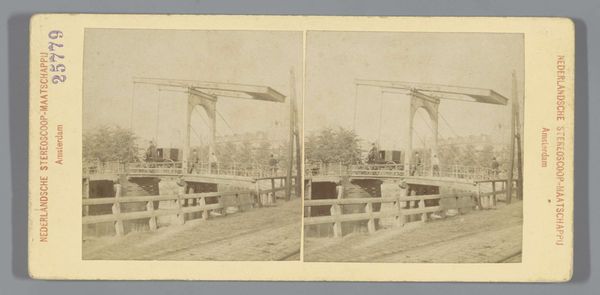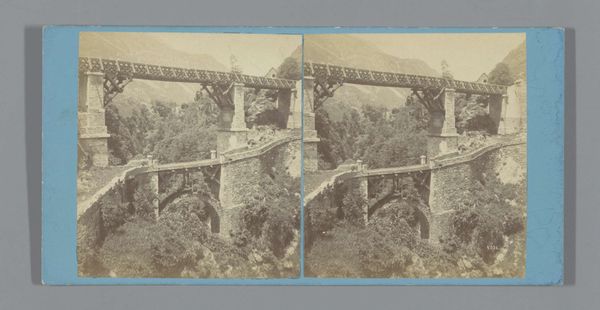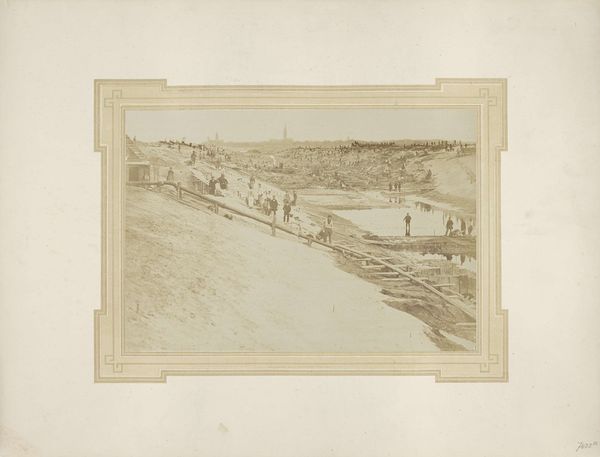
Grafmonument van Gian Galeazzo Visconti in het klooster van Certosa di Pavia in Lombardije, Italië 1854 - 1885
0:00
0:00
Dimensions: height 109 mm, width 74 mm
Copyright: Rijks Museum: Open Domain
Editor: This is a photographic print from between 1854 and 1885, showing different views of the Grafmonument van Gian Galeazzo Visconti in the Certosa di Pavia monastery in Lombardy. It strikes me as a very formal, almost clinical study of architecture and funerary art. What can you tell me about the cultural symbols at play here? Curator: Indeed. The careful depictions remind us of the era’s fascination with documenting historical and architectural grandeur. Consider how Gian Galeazzo Visconti, the first Duke of Milan, is memorialized. Death, viewed through the lens of the 19th century, took on potent symbolic weight. What elements in these images speak to themes of power, legacy, and perhaps even redemption? Editor: Well, the arches and columns, the sheer scale of the architecture—they all suggest enduring power. But the somber tone and the focus on a tomb also evoke mortality. Is there a tension between these symbols? Curator: Precisely! The architectural language, drawing heavily on Neoclassicism, aims to revive the grandeur of antiquity, connecting Visconti to a lineage of emperors and conquerors. This ambition is constantly challenged by the inevitable decay inherent in all earthly structures. Do you notice any other visual elements suggesting similar contrasting ideas? Editor: Perhaps the play of light and shadow? The shadows emphasize the monument's mass but also suggest a kind of fading, a passage of time. Curator: Excellent observation! Light and shadow often represent knowledge and ignorance. What’s highlighted is revealed to us. What’s in shadow remains concealed. Can this tell us anything about society's shifting relationship with its heroes and ancestors over time? How does the very act of photographing it transform how later generations perceive Visconti? Editor: I see what you mean. It's not just a record but an interpretation, shaping our understanding of history. The formal style even amplifies that effect. Thanks for opening my eyes to these deeper meanings! Curator: My pleasure. This just demonstrates that architectural images possess a remarkable power to echo our most fundamental ideas.
Comments
No comments
Be the first to comment and join the conversation on the ultimate creative platform.
